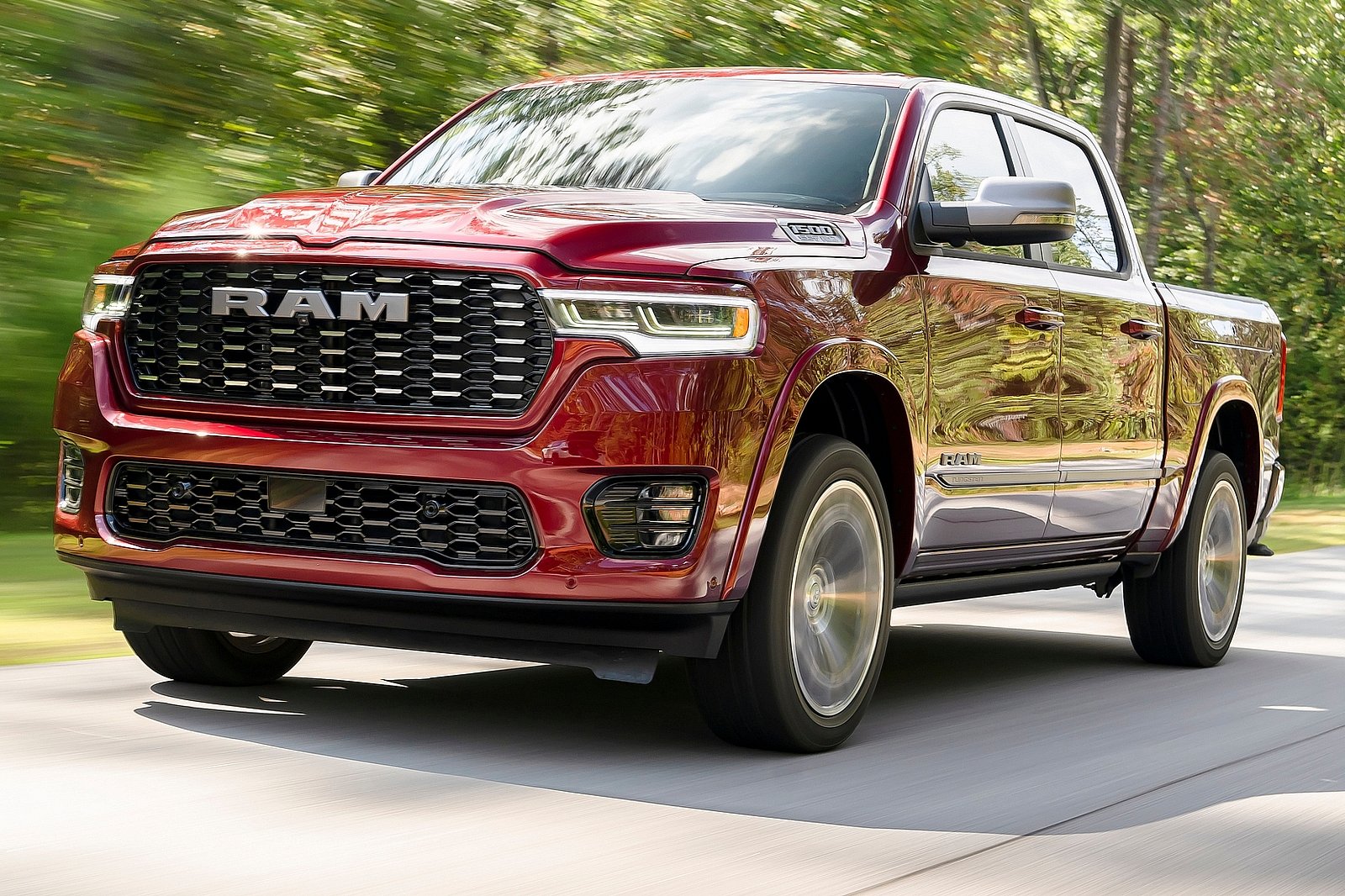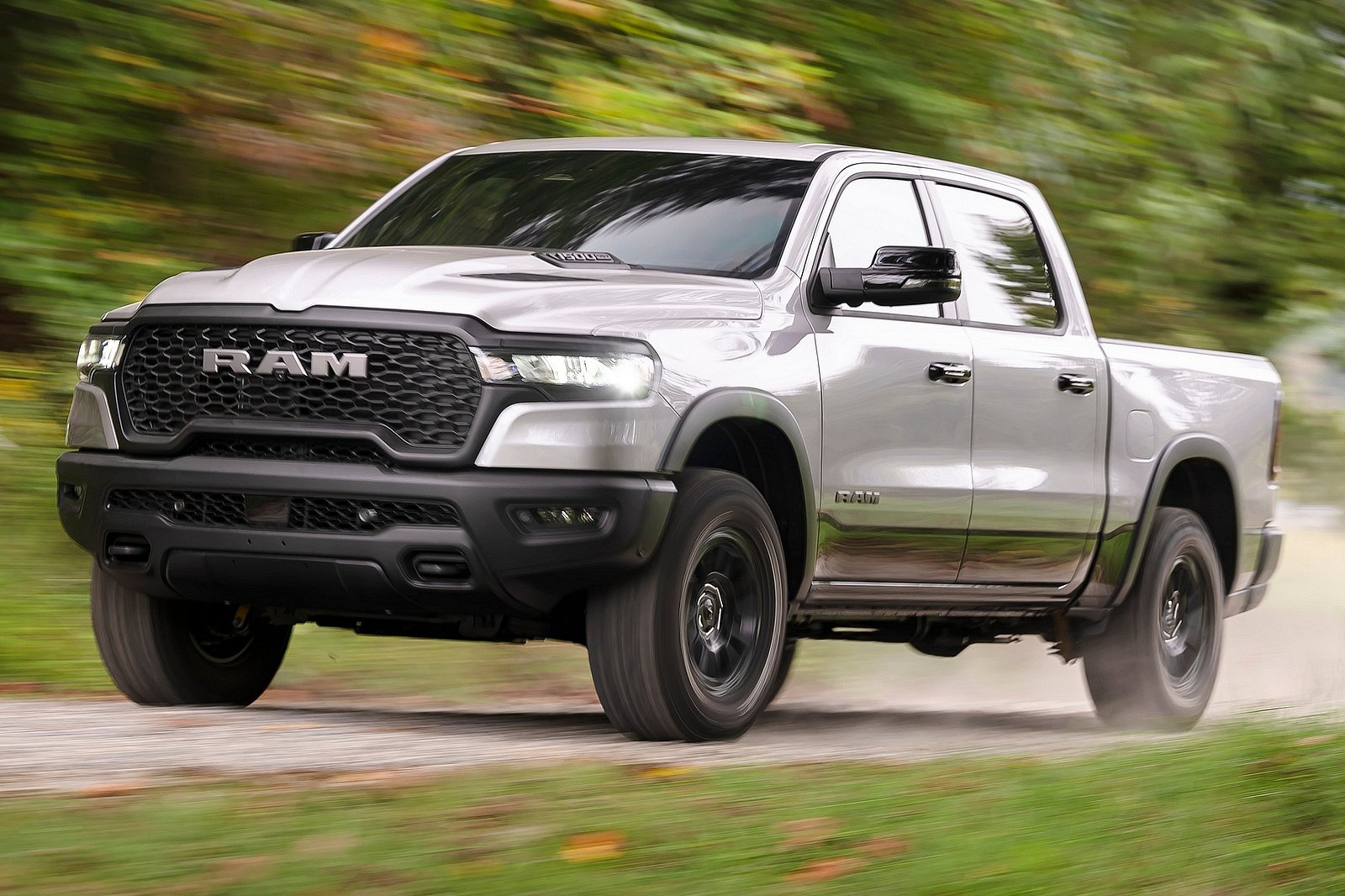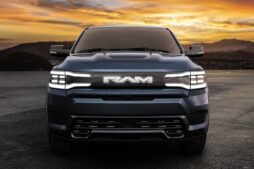Optimal Performance: The High Output Model Requires 91-Octane Fuel for Proper Functioning
The revamped 2025 Ram 1500 trucks are equipped with the Hurricane inline-six engines, which boast a lighter and more efficient design compared to their V8 predecessors. However, despite these advantages, they may not necessarily yield lower operational costs due to varying octane requirements.
Last year, the latest version of the Ram 1500 was unveiled and it is no longer available with a V8 engine. Instead, it boasts new inline-six engines that boast equal power and performance, but with better fuel efficiency. Although exact fuel economy figures have not yet been released for these engines by Ram, there have been noticeable improvements in similar models such as the Jeep Wagoneer and Grand Wagoneer. For instance, the Grand Wagoneer, equipped with a V8 and four-wheel drive, has an estimated fuel economy of 15 mpg on the combined cycle, whereas the more powerful turbocharged six-cylinder offers an additional two mpg.
The manual for the 2025 1500 has been obtained by 5thGenRams, providing us with valuable knowledge about the upcoming pickup and its engine options.

The 5.7-liter V8 engine had the ability to function well with 87-octane fuel, however, Ram advised their customers to opt for 89-octane in order to fully experience its impressive performance of 390 horsepower and 410 lb-ft of torque. This also applies to the Standard Output Hurricane engine.
As stated in the owner’s manual, the Standard Output engine was specifically engineered to comply with emissions regulations and deliver satisfactory fuel efficiency when filled with regular gasoline that has an octane level of 87. However, for enhanced performance, a higher octane rating of 91 or above is necessary, similar to the Hemi engine. The manual states, “This boost in performance is most evident during hot weather or when facing demanding tasks such as towing.”
The Standard Output model remains compatible with affordable 87-octane fuel and boasts better fuel efficiency. It’s worth noting that this engine delivers an impressive 420 horsepower and 469 lb-ft of torque in its base configuration.

When it comes to the High Output version of the Hurricane inline-six, things take a turn. As stated in the owner’s manual, this specific tune mandates the utilization of at least 91-octane fuel. “The engine instructions specify that the use of 91 or higher octane premium gasoline is necessary for this engine.”
The lowest required fuel quality also unlocks the complete potential of 540 hp and 521 lb-ft output from the Hurricane six engine. Despite any possible slight fuel mileage increases, the added expense of using 91-octane fuel may outweigh the perks compared to the Hemi V8 counterpart, which can operate on 87-octane. However, the updated version does produce lower emissions, a positive factor to consider.
When it comes to productivity, don’t overlook the fact that the Ram series will expand to feature the Ramcharger and the completely electric REV version.

Naturally, you may also choose the Standard Output option and utilize 87-octane gasoline.
It should be mentioned that the Standard Output engine is included as standard on the Rebel and Laramie models. Customers can also opt to have this motor installed in their Big Horn and Tradesman trims for an extra $2,695. Despite the discontinuation of the V8, Stellantis currently plans to continue offering the base 3.6-liter V6 engine.
Customers must select the Limited, Limited Longhorn, or Tungsten options in order to benefit from the impressive strength of the energetic High Output straight-six engine. Without a doubt, these variations come at a higher cost and for the Tungsten specifically, buyers can anticipate a hefty price tag of $90,000.
Surprisingly, the highest towing capability is only achievable when paired with the Standard Output engine; certain models can tow up to 11,560 lbs, surpassing the maximum High Output towing capacity by 820 lbs.







